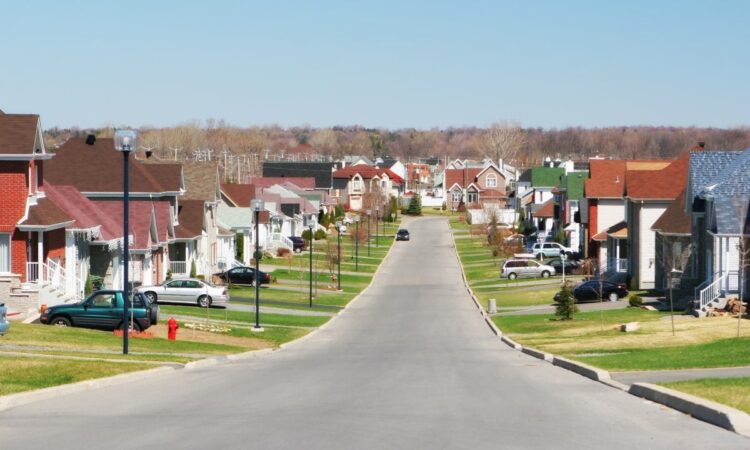
When the federal regulator of mortgage lending giants Fannie Mae and Freddie Mac announced an arcane schedule of new loan fees in January, few outside the industry paid attention.
Once it became clear the new fees would penalize some borrowers with high credit scores and reward some with lower scores, the changes became embroiled in political debate.
After criticism that the new program punishes borrowers with high credit scores, Sandra Thompson, director of the Federal Housing Finance Agency (FHFA), defended the changes this week.
“Higher-credit-score borrowers are not being charged more so that lower-credit-score borrowers can pay less,” said Thompson in a statement. “The updated fees, as was true of the prior fees, generally increase as credit scores decrease for any given level of down payment.”
How are mortgage fees changing?
Starting May 1, a new schedule of upfront fees applies to mortgages backed by Fannie Mae and Freddie Mac. The new fees will increase costs to borrowers overall by 0.04 percentage point, according to the FHFA. That means a borrower who would have paid a 6.5 percent APR under the old fees would pay 6.54 percent now.
The FHFA’s new grid slices and dices these mortgage fees into more than 80 categories based on the borrower’s credit score, down payment and other factors.
For example, if you have a score of 640 to 659 and borrow 75.01 percent to 80 percent of the home’s value — in other words, make a 20 percent to 25 percent down payment —you now pay a fee equal to 2.25 percent of the loan balance. Before these changes, the same borrower paid a 3 percent fee. On a hypothetical $350,000 loan, that’s a savings of $2,813.
A borrower with a higher credit score of 740 to 759 would have paid a fee of 0.5 percent on a loan with an 80 percent loan-to-value (LTV) ratio. Under the new rules, that fee rises to 0.875 percent. On a $350,000 loan, that’s an extra cost of $1,313.
In another example, if you have a score of 640 to 659 and borrow 70 percent to 75 percent of the home’s value, you now pay a fee equal to 1.5 percent of the loan balance. Before these changes, the same borrower paid a 2.75 percent fee. On a $350,000 loan, that’s a savings of $4,375.
A borrower with a higher credit score of 740 to 759 would have paid a fee of just 0.25 percent on a loan with a 75 percent LTV ratio. Under the new rules, that fee rises to 0.375 percent. On a $350,000 loan, that’s an extra cost of $438.
The takeaway: The borrower with a strong credit score still pays less in fees compared to the borrower with the fair credit score. The reward for stellar credit, however, has narrowed for some borrowers.
Who’s affected?
The new fee schedules were created by the FHFA, which oversees Fannie Mae and Freddie Mac. These two government-sponsored enterprises buy about two-thirds of the mortgages originated by U.S. lenders.
The changes affect those with conventional loans, which are largely geared toward borrowers with solid credit histories. The fee schedule doesn’t affect borrowers taking loans backed by the Federal Housing Administration (FHA), the Department of Veterans Affairs (VA) or the U.S. Department of Agriculture (USDA).
Does this mean I don’t need to worry about my credit score?
No — quite the opposite. Your credit score remains the most important driver of your mortgage rate. These new fees mean that some borrowers with high credit scores get less of a break than in the past.
The lowest fees on the new fee schedule still go to borrowers with high credit scores, however. For instance, in the scenario above, the new fee for borrowers with credit scores above 780 and making 25 percent down payments is zero.
Why are regulators adjusting mortgage fees?
The additional revenue aims to bolster the financial soundness of Fannie Mae and Freddie Mac, a bipartisan issue since the Great Recession.
“Since entering conservatorship in 2008, [Fannie and Freddie] have remained undercapitalized and maintain a taxpayer backstop should they confront significant losses,” said Thompson.
The agency has been balancing a need to shore up the finances of Fannie and Freddie with the desires of borrowers. For instance, during the coronavirus pandemic, Thompson’s predecessor imposed an “adverse market fee” that added about $1,400 to the cost of a typical loan.
In another consideration, the FHFA also says it hasn’t taken a look at its basic schedule of upfront fees for years.
“Some mistakenly assume that the prior pricing framework was somehow perfectly calibrated to risk — despite many years passing since that framework was reviewed comprehensively,” said Thompson.
Bottom line
Depending on your credit score and down payment, the fees for taking a conventional loan have gotten more or less generous. Ultimately, there isn’t much a borrower can do about the fees, and Fannie and Freddie loans remain the best deal for most. As a borrower, you’re still rewarded for maintaining a high credit score and making a hefty down payment.






